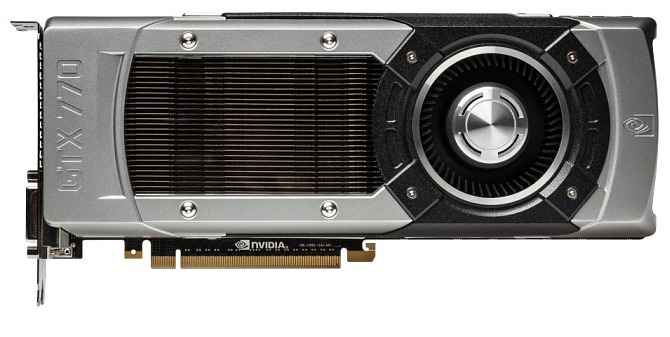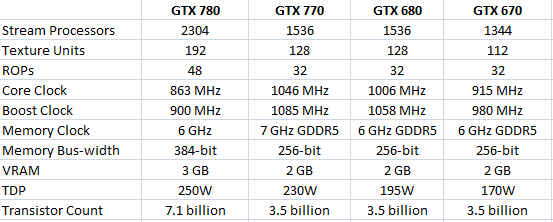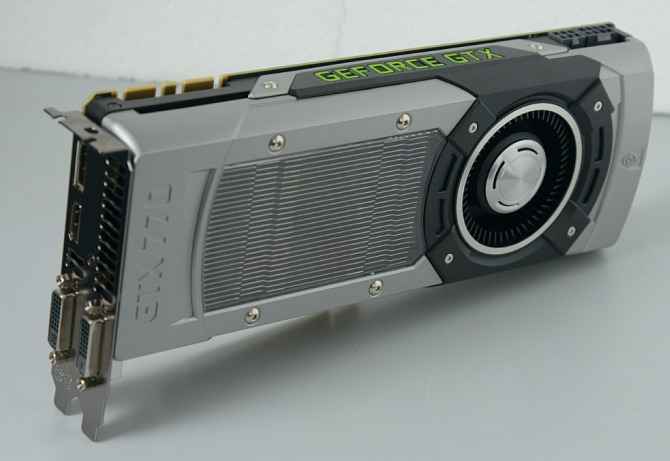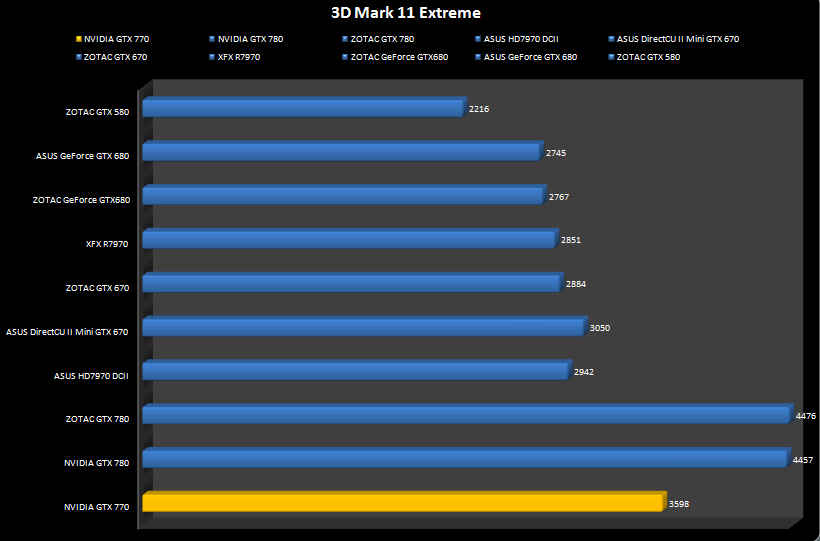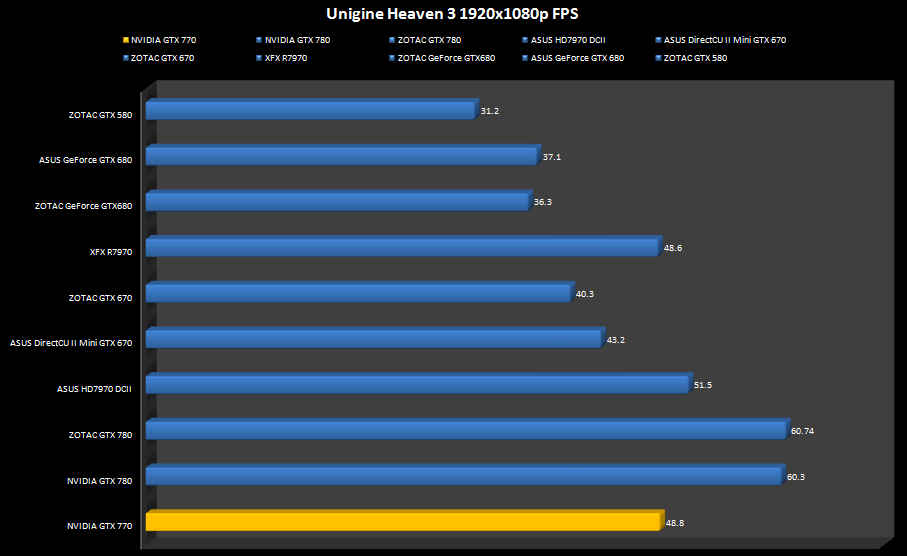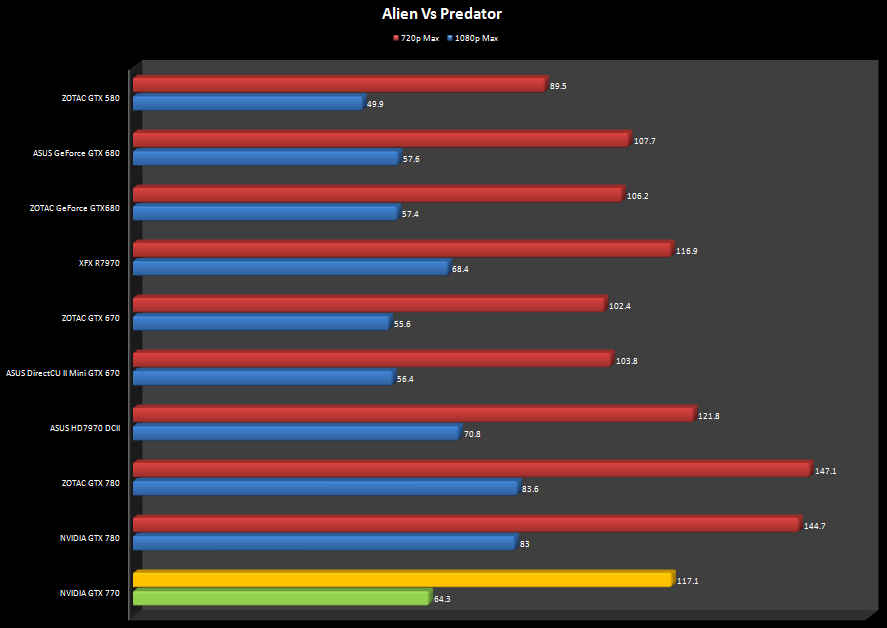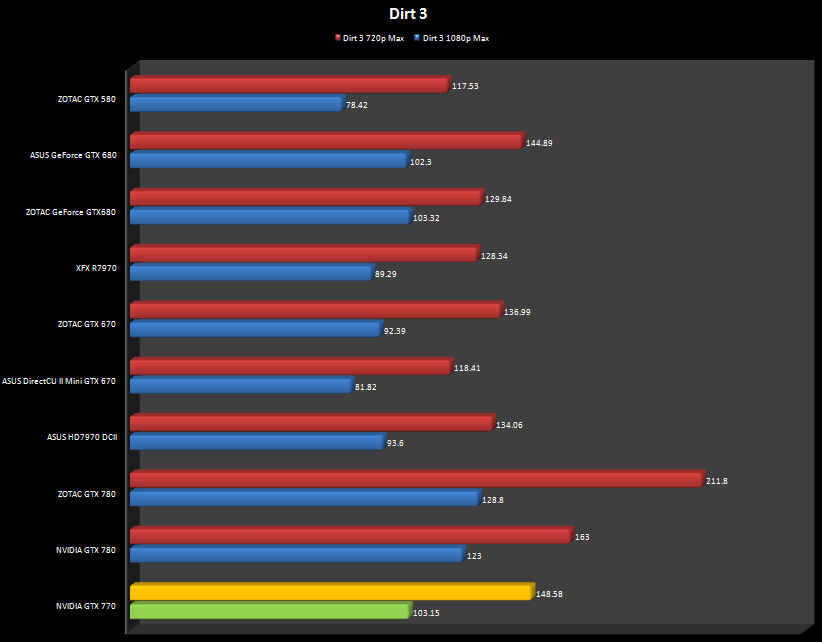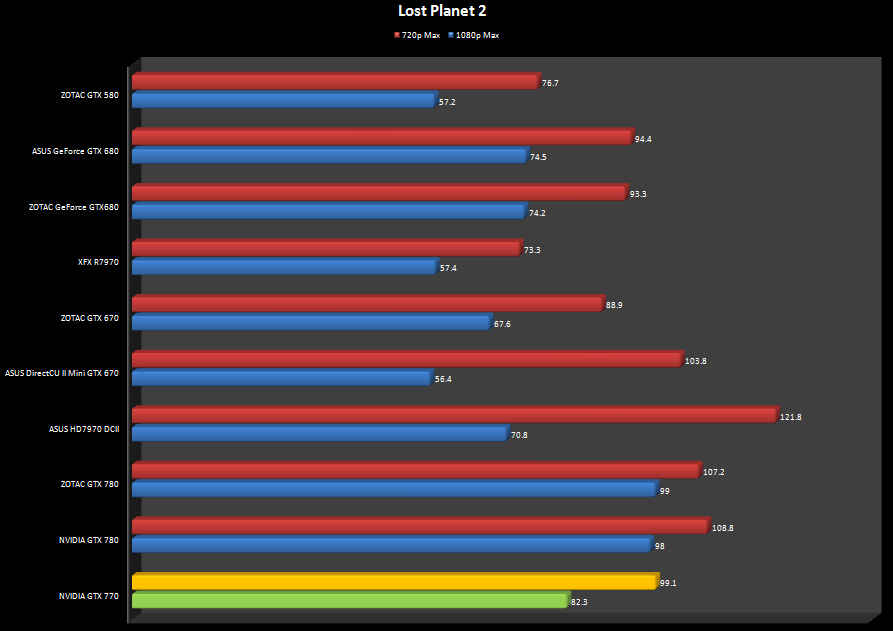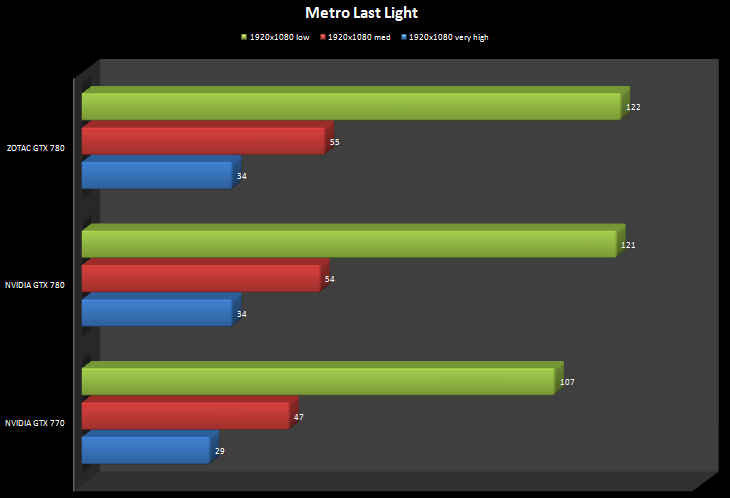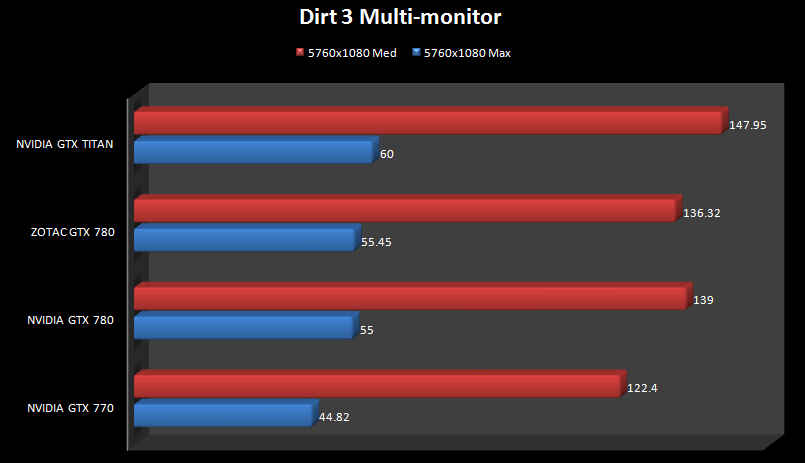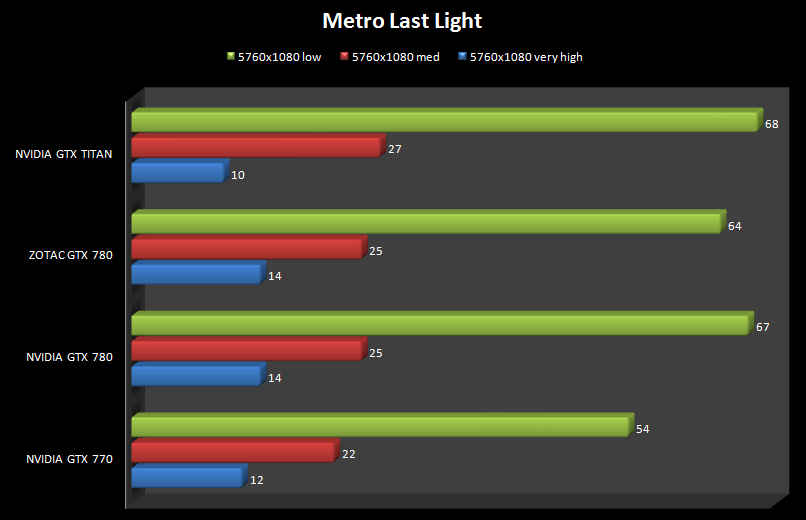The NVIDIA GTX 770 is an impressive card as we have already seen from the scores. Barring the GTX 780 and the GTX Titan, the GTX 770 performs better than most other cards out there. Sure, it gets competition from the HD 7970, but we also noted in some games such as Dirt 3 that the GTX 770 went past the HD 7970. The GTX 770 is faster than the GTX 680. It all boils down to pricing. Looking at the Rs. 29,990 pricing, it makes sense to go for this card than the Rs. 30,000 plus GTX 680s.
Design and Features
Now while the NVIDIA GeForce GTX 780 was based on a stripped down version of the GK110 GPU (seen in GTX Titan), the new GTX 770 is based on the GK104 GPU. As you may recall, the previous generation NVIDIA GTX 680 was based on the GK104 GPU as well. In terms of specifications, the GTX 770 and the GTX 680 are quite identical in most respects as can be seen from the chart below.
The interesting addition is the memory clock speed. The GTX 770 is the first card which ships with a 7 GHz GDDR5 memory clock which is 1 GHz higher than the GTX 680 memory clock. Thanks to a higher memory clock and the presence of GPU Boost 2.0 (which dynamically increases clock speed based on the graphics workload based on the power and temperature headrooms) the maximum TDP of the GTX 770 is 230 W which is 35 W higher than the GTX 680.
Coming to the build quality, the GTX 770, just like the GTX 780, looks like a clone of the GTX Titan. In fact, when you place these three cards side by side and cover the card number branding, it is very difficult to tell each cards apart. The GTX 770 has the same silver coloured aluminum sheath, the same fan which blows the air out, transparent plastic covering the vapour chamber and so on.
Coming to the display ports, we have two DVI ports alongwith an HDMI and a DisplayPort. The top portion of the card has a GeForce GTX flourescent branding which glows when the card is running. On the left hand side on the top you have the SLI connector, whereas on the right hand side, you have one six-pin and one eight-pin power connector.
Test Setup
Processor: Intel Core i7-3960X
Motherboard: ASRock X79 Extreme6/GB
RAM: 8GB Kingston HyperX @ 1333MHz
PSU: Cooler Master Silent Pro 850W
CPU Cooler: Cooler Master Seidon 120M
SSD: Kingston SSDNow KC 120 GB
Cabinet: Cooler Master HAF XM
Monitor: Dell S2740L (single monitor)
OS: Windows 7 Ultimate 64-bit
Visit page two for performance scores of the Nvidia GeForce GTX 770…
Performance scores
Synthetic benchmarks
3D Mark 11 is a very popular benchmark used for testing the 3D graphics prowess of a card. We keep the 3D Mark 11 settings at Extreme levels. As seen in the graph above, the GTX 770 is second only to the GTX 780. It leaves behind the GTX 670 and HD 7970 way behind.
Unigine Heaven 3 is another popular synthetic benchmark based on the Unreal engine. It runs through a scene which involves floating islands, detailed air-ships, dungeons and so on. The benchmark allows you to adjust the shaders, anti-aliasing, anisotropic filtering, tessellation and so on. For our test, we kept all the settings at the maximum levels. Here again, the GTX 770 excels with a frame rate of 48.8 FPS. The ASUS HD 7970 DCII was the only other card which went past it apart from the GTX 780s and the XFX HD 7970 comes close.
Real Life Testing
As seen in the benchmarks above, the NVIDIA GTX 770 holds its own against the competition. Barring the GTX 780s and HD 7970s, the GTX 770 performs quite well. In Alien Vs Predator the HD 7970s were the only cards which crossed the GTX 770. What’s interesting to note is that the GTX 770 is faster than the older generation GTX 680 in Alien Vs Predator whereas in Dirt 3 the performance difference between the two is quite marginal. The GTX 770 crosses the HD 7970s in Dirt 3. The trend continues in Lost Planet 2, with only the scores at 1280x720p maximum settings being overshadowed by HD 7970s.
We got our hands on Metro Last Light quite recently, but unfortunately we could only test it with the GTX 700 series cards. Rest assured, we will update older cards using Metro Last Light and most new games in the near future. So, keep checking this page for updated charts.
One thing that we noticed with the GTX 780 is also seen in this card. The load temperatures touched 83 degrees Celsius which is quite high since we had a 200mm fan on the side panel.
Visit page three for multi-monitor benchmarks, and our verdict…
Multi-monitor tests
We had a bunch of monitors lying around and thought of doing some multi-monitor testing of the GTX 700 series cards just to give you an idea how the cards perform vis-à-vis the GTX TITAN.
In Metro Last Light, the scores are within a margin of error between the cards. The GTX 770 gives an impressive performance provided the settings are on Low when compared with the GTX 780 and the TITAN as well. Dirt 3 multi-monitor scores were good as well, but here you can see the proper hierarchy with the GTX TITAN leading. Having said that, the GTX 770 still delivers playable frame rates.
Verdict
The NVIDIA GTX 770 is an impressive card as we have already seen from the scores. Barring the GTX 780 and the GTX Titan, the GTX 770 performs better than most other cards out there. Sure, it gets competition from the HD 7970, but we also noted in some games such as Dirt 3 that the GTX 770 went past the HD 7970. The GTX 770 is faster than the GTX 680. It all boils down to pricing. Looking at the Rs. 29,990 pricing, it makes sense to go for this card than the Rs. 30k plus GTX 680s. It will be really interesting to see how the GTX 680 and GTX 670 prices update after we have different partners coming out with their version of the GTX 770. The GTX 770 is a worthy wingman to the powerful GTX 780. But partner pricing and game bundles are what will decide the fate of GTX 770 as the HD 7970 is also an able performer. At the moment it is best to wait for more players to release their GTX 770 and see how it performs vis-à-vis the reference card we tested today.

